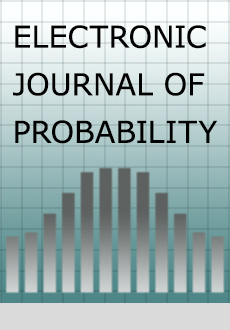Abstract
We study a model of $ N $ mutually repellent Brownian motions under confinement to stay in some bounded region of space. Our model is defined in terms of a transformed path measure under a trap Hamiltonian, which prevents the motions from escaping to infinity, and a pair-interaction Hamiltonian, which imposes a repellency of the $N$ paths. In fact, this interaction is an $N$-dependent regularisation of the Brownian intersection local times, an object which is of independent interest in the theory of stochastic processes. The time horizon (interpreted as the inverse temperature) is kept fixed. We analyse the model for diverging number of Brownian motions in terms of a large deviation principle. The resulting variational formula is the positive-temperature analogue of the well-known Gross-Pitaevskii formula, which approximates the ground state of a certain dilute large quantum system; the kinetic energy term of that formula is replaced by a probabilistic energy functional. This study is a continuation of the analysis in [ABK06] where we considered the limit of diverging time (i.e., the zero-temperature limit) with fixed number of Brownian motions, followed by the limit for diverging number of motions.
Citation
Stefan Adams. Jean-Bernard Bru. Wolfgang Koenig. "Large systems of path-repellent Brownian motions in a trap at positive temperature." Electron. J. Probab. 11 460 - 485, 2006. https://doi.org/10.1214/EJP.v11-330
Information





